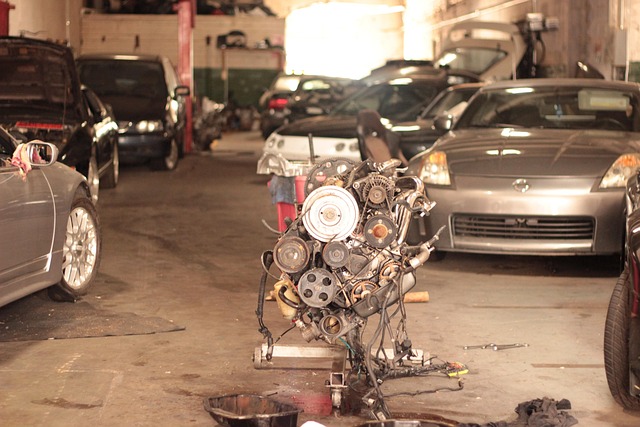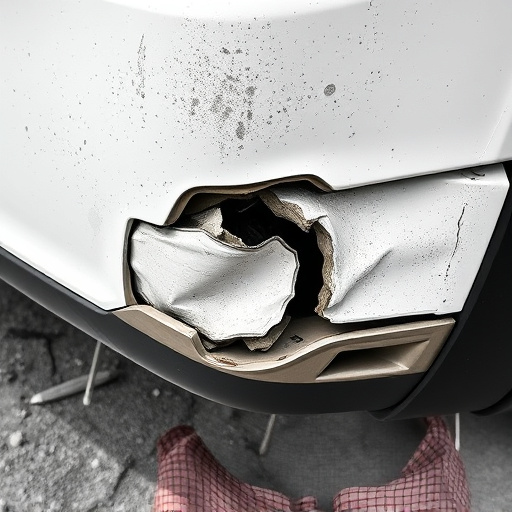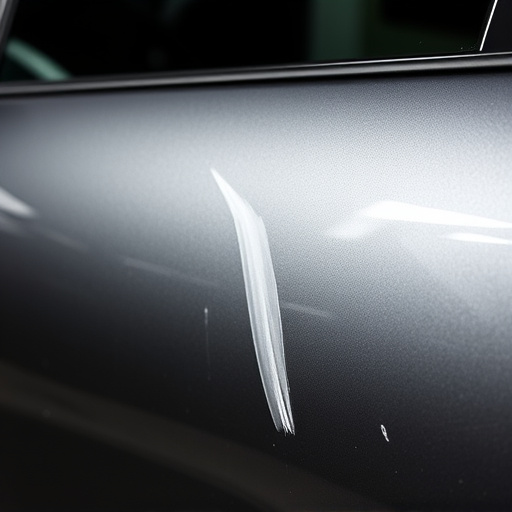Composite material repair in modern cars presents unique challenges due to their complex structure and superior properties. Specialized knowledge, equipment, and advanced techniques like autoclave lamination, resin injection, or fiber reinforcement are required. The meticulous process starts with inspection, preparation, and matching original specifications to restore structural integrity, performance, and aesthetic appeal. Regular training, industry standards, robotics, AI, smart composites, and enhanced sustainability are future trends in composite material repair, promising improved efficiency and a greener automotive industry.
In today’s high-performance automotive landscape, composite materials offer lightweight solutions enhancing fuel efficiency and vehicle dynamics. However, their intricate structure presents unique challenges during repair compared to traditional metal components. This article delves into the world of composite material repair techniques tailored for high-performance vehicles, exploring both established and emerging methods. From understanding the peculiarities of composites to practical step-by-step guides and future trends, this comprehensive overview equips professionals with the knowledge to efficiently and effectively repair these advanced materials.
- Understanding Composite Materials and Their Unique Challenges in Vehicle Repair
- Advanced Repair Techniques for Composites: A Step-by-Step Guide
- Best Practices and Future Trends in Composite Material Repair for High-Performance Vehicles
Understanding Composite Materials and Their Unique Challenges in Vehicle Repair

Composite materials, a game-changer in modern automotive design, offer exceptional strength and lightweight properties, enhancing vehicle performance. However, their intricate structure presents unique challenges when it comes to repair compared to traditional metal or plastic components. These advanced materials, often consisting of carbon fiber, Kevlar, or glass fibers embedded in resins, demand specialized knowledge and equipment for effective repairs. Cracks, delaminations, or impact damage require precise techniques to ensure structural integrity without compromising the material’s performance characteristics.
In an auto repair shop, composite material repair differs from conventional auto dent repair or vehicle repair services. It involves a meticulous process, including inspection, preparation, and specialized repair methods like autoclave lamination, resin injection, or fiber reinforcement. The goal is to match the original material properties, ensuring the restored part performs as effectively as new, while maintaining the vehicle’s overall aesthetic appeal.
Advanced Repair Techniques for Composites: A Step-by-Step Guide

Advanced composite material repair techniques have become indispensable for high-performance vehicles, offering unparalleled strength and lightweight properties. To effectively address composite damage, especially after a vehicle collision, a meticulous step-by-step approach is crucial. The process begins with thorough inspection to identify the extent of the damage, which can range from delaminations to fiber displacement. Next, the affected area is meticulously prepared by removing loose debris and ensuring surface cleanliness, a foundational step for successful composite material repair.
Once ready, specialized tools and resins are employed to mend the composite structure. This involves layering new composite materials, carefully matched to the original specifications, to fill in gaps and reestablish structural integrity. Curing under controlled conditions ensures optimal performance, followed by meticulous finishing to match the vehicle’s original aesthetic. Integrating these advanced repair techniques into auto body repair practices has significantly enhanced the longevity and safety of high-performance vehicles, addressing composite material repair with precision and effectiveness.
Best Practices and Future Trends in Composite Material Repair for High-Performance Vehicles

In the realm of high-performance vehicles, composite material repair is an art that demands precision and innovation. Best practices involve utilizing advanced techniques such as autoclave molding for complex structures, ensuring minimal residual stresses, and employing specialized adhesives tailored to composite materials. Regular training and staying updated with industry standards are crucial to achieving top-notch repairs, maintaining structural integrity, and preserving the vehicle’s performance.
Looking ahead, future trends in composite material repair for high-performance vehicles promise enhanced efficiency and sustainability. The integration of advanced robotics and AI in collision repair centers can streamline processes, reduce human error, and optimize material utilization. Moreover, the development of smart composites that self-repair or change properties based on environmental conditions could revolutionize tire services, making them more durable and adaptive. These innovations not only cater to the growing demand for high-performance vehicles but also contribute to a greener and more efficient automotive industry.
Composite material repair techniques have evolved significantly, offering advanced solutions for high-performance vehicle manufacturers. By understanding the unique characteristics of composite materials and adopting innovative repair methods, such as automated reinforcement placement and resin infusion, technicians can ensure structural integrity and optimize performance. As the demand for lightweight, durable vehicles continues to grow, staying abreast of best practices and future trends in composite material repair will be paramount for maintaining high standards in the automotive industry.












